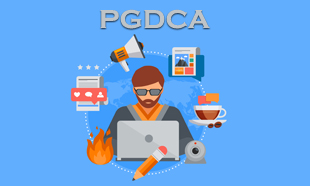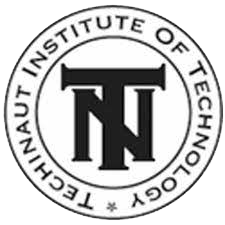7
Elevate your expertise with our Post Graduate Diploma in Computer Application at KS Computer Institute, VPO Dorangla, Gurdaspur, Punjab. Gain advanced skills in computer applications and unlock exciting career opportunities. Enroll now for success!
POST GRADUATE DIPLOMA IN COMPUTER APPLICATION
In today's digital age, proficiency in computer applications is essential for individuals pursuing careers in various fields, from information technology to business administration. "KS Computer Institute," a franchise of "Techinaut Institute of Technology" located in VPO Dorangla, Gurdaspur, Punjab, offers a one-year Post Graduate Diploma in Computer Application (PGDCA) course. This program aims to provide students with comprehensive knowledge and practical skills in computer applications to prepare them for diverse career opportunities in the tech industry. This article provides an in-depth overview of the course curriculum, covering topics ranging from computer basics to advanced programming and problem-solving techniques.
THE OBJECTIVE OF THE COURSE:
The Post Graduate Diploma in Computer Application (PGDCA) course at KS Computer Institute is designed to achieve the following objectives:
- Provide students with a solid foundation in computer fundamentals and appreciation.
- Familiarize students with computer organization and operating systems.
- Equip students with practical skills in using Microsoft Office applications for word processing, spreadsheet analysis, and presentations.
- Introduce students to information technology and its impact on society.
- Train students in internet fundamentals, including networking, e-mail, and web browsing.
- Introduce students to programming concepts and algorithms for problem-solving.
COURSE OVERVIEW:
The PGDCA course curriculum at KS Computer Institute is structured to cover a wide range of topics over one year. The following is an overview of the critical modules included in the curriculum:
BASIC OF COMPUTER:
Students begin by learning the fundamentals of computer systems, including hardware components, software types, and data representation. They understand computer architecture, input/output, memory, and storage devices. Students also learn about computer software categories such as system and application software.
COMPUTER APPRECIATION:
In this module, students develop an appreciation for the role of computers in modern society. They explore the historical evolution of computing technology, significant milestones in computer history, and the impact of computers on various industries and everyday life. Emphasis is placed on understanding the significance of computer literacy in today's digital world.
COMPUTER ORGANIZATION:
In this module, students delve into the internal structure and organization of computers. They learn about CPU architecture, instruction execution cycle, memory hierarchy, and input/output operations. Topics such as binary data representation, logic gates, and Boolean algebra are also covered to provide a comprehensive understanding of computer organization.
OPERATING SYSTEM:
This module introduces students to operating system concepts and functions. They learn about different operating systems and their features, including Windows, Linux, and macOS. Topics covered include process, memory, file systems, and device management. Students also gain hands-on experience in operating system installation, configuration, and administration.
MS WORD PROCESSING:
Students acquire proficiency in using Microsoft Word, a leading word-processing software. They learn how to create, format, edit, and proofread documents using various tools and features available in Microsoft Word. Topics covered include document formatting, tables, graphics, mail merge, and collaboration features.
MS SPREADSHEET PACKAGE:
In this module, students learn to use Microsoft Excel, a powerful spreadsheet software, for data analysis and manipulation. They know how to create, format, and manage worksheets, perform calculations, create charts and graphs, and use advanced functions and formulas. Topics such as data validation, sorting, filtering, and pivot tables are also covered.
MS PRESENTATION PACKAGE:
Students gain proficiency in creating dynamic and engaging presentations using Microsoft PowerPoint. They learn to design slides and add text, graphics, animations, and multimedia elements to presentations. Topics covered include slide layout, transitions, and presentation delivery techniques.
INFORMATION TECHNOLOGY AND SOCIETY:
This module explores the impact of information technology on society and various aspects of human life. Students examine the role of technology in education, healthcare, business, governance, and entertainment. They also explore ethical, legal, and social issues related to information technology, such as privacy, security, and the digital divide.
INTRODUCTION TO THE INTERNET:
Students are introduced to the fundamentals of the internet, including its history, architecture, and protocols. They learn about internet services and technologies like e-mail, web browsing, search engines, and social media. Topics such as TCP/IP, DNS, HTTP, and HTML are covered to provide a foundational understanding of Internet networking.
INTERNET NETWORK:
In this module, students delve deeper into Internet networking concepts and technologies. They learn about network infrastructure, including LANs, WANs, routers, switches, and protocols. Topics such as IP addressing, subnetting, routing, and network security are covered to enable students to understand and troubleshoot internet network issues.
E-MAIL:
Students learn how to use e-mail effectively for communication and collaboration. They explore e-mail etiquette, message composition, attachments, forwarding, and filtering. Topics such as e-mail security, spam prevention, and managing e-mail accounts are also covered to ensure students can use e-mail safely and efficiently.
INTRODUCTION TO PROGRAMMING:
This module introduces students to programming concepts and principles. They learn about programming languages, algorithms, flowcharts, and pseudocode. Emphasis is placed on problem-solving techniques and algorithm development. Students also gain hands-on experience writing and debugging simple programs using high-level programming languages such as Python or Java.
ALGORITHMS FOR PROBLEM-SOLVING:
In this module, students deepen their understanding of algorithms and problem-solving techniques. They learn about algorithm analysis, algorithm design paradigms, and common algorithmic problems. Topics such as searching, sorting, recursion, and dynamic programming are covered in detail. Students also work on algorithmic problem-solving exercises and projects to strengthen their programming skills.
CONCLUSION:
The Post Graduate Diploma in Computer Application (PGDCA) course at KS Computer Institute offers a comprehensive and structured curriculum to equip students with the skills and knowledge necessary to excel in computer applications. By covering a wide range of topics, from computer fundamentals to programming and problem-solving, the course prepares students for diverse career opportunities in the tech industry. Graduates emerge with the ability to leverage technology effectively, analyze data, solve complex problems, and contribute positively to their organizations and society. With these skills, students are well-positioned to thrive in the rapidly evolving digital landscape and pursue rewarding careers in various sectors.


